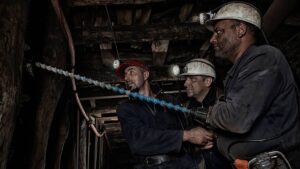Explorers to get on the ground faster after WA moves to slash red tape

Pic: Tyler Stableford / Stone via Getty Images
Resource explorers in Western Australia could be exploring faster than ever after the state government committed to cutting timeframes for assessing work applications by half to 15 business days from July 1.
The news was welcomed by the Association of Mining and Exploration Companies (AMEC), with chief executive officer Warren Pearce saying that it will make the state even more attractive to investors by cutting red tape and costs.
Western Australia is already considered the world’s most attractive jurisdiction for mining and exploration investment, according to the 2019 Fraser Institute’s Annual Survey of Mining Companies.
“In 2019, DMIRS [Department of Mines, Industry Regulation and Safety] received 2,646 PoW [program of work] applications,” Pearce noted.
“If assuming these timeframes, today’s announcement would have meant going from 79,380 processing days to 39,690 days in 2019 – that’s huge.”
This was supported by WA Mines and Petroleum Minister Bill Johnston, who said that cutting the timelines in half was a significant benefit to the mining sector as it meant that companies could expect an assessment decision within three weeks rather than six.
“The reduction in assessment timeframes for Program of Work applications is a great example of government, industry and the community working together to unlock Western Australia’s economic potential,” he added.
Explorers and prospectors must lodge a PoW application for DMIRS approval before using mechanised equipment for ground disturbance on a mining tenement. This includes drilling, clearing tracks and digging exploratory pits.
The department recently determined that it could streamline its exploration environmental approvals process for exploration PoW applications.
This has been helped in part through its development over the past few years of online spatial application and assessment systems that deliver tangible results in streamlining the PoW application and assessment process.
“AMEC has been advocating for this commitment, and today’s announcement follows on from industry and government workshops in 2019 that specifically looked at ways of improving timeframes for programs of work assessments,” Pearce noted.
“Importantly, this is an achievable target and demonstrates the government’s commitment to improving efficiency in the approvals system and reducing time and costs for explorers.”
Johnston said the state government would continue to streamline its regulation of the resources sector to reduce barriers, increase productivity and support jobs.
While mineral exploration activities employed a relatively modest 3,086 people during the 2018-19 financial year, successful exploration leads to mining activity and the state’s mining sector employed a record 124,010 people in the 2018-19 financial year.
Related Topics
UNLOCK INSIGHTS
Discover the untold stories of emerging ASX stocks.
Daily news and expert analysis, it's free to subscribe.
By proceeding, you confirm you understand that we handle personal information in accordance with our Privacy Policy.








